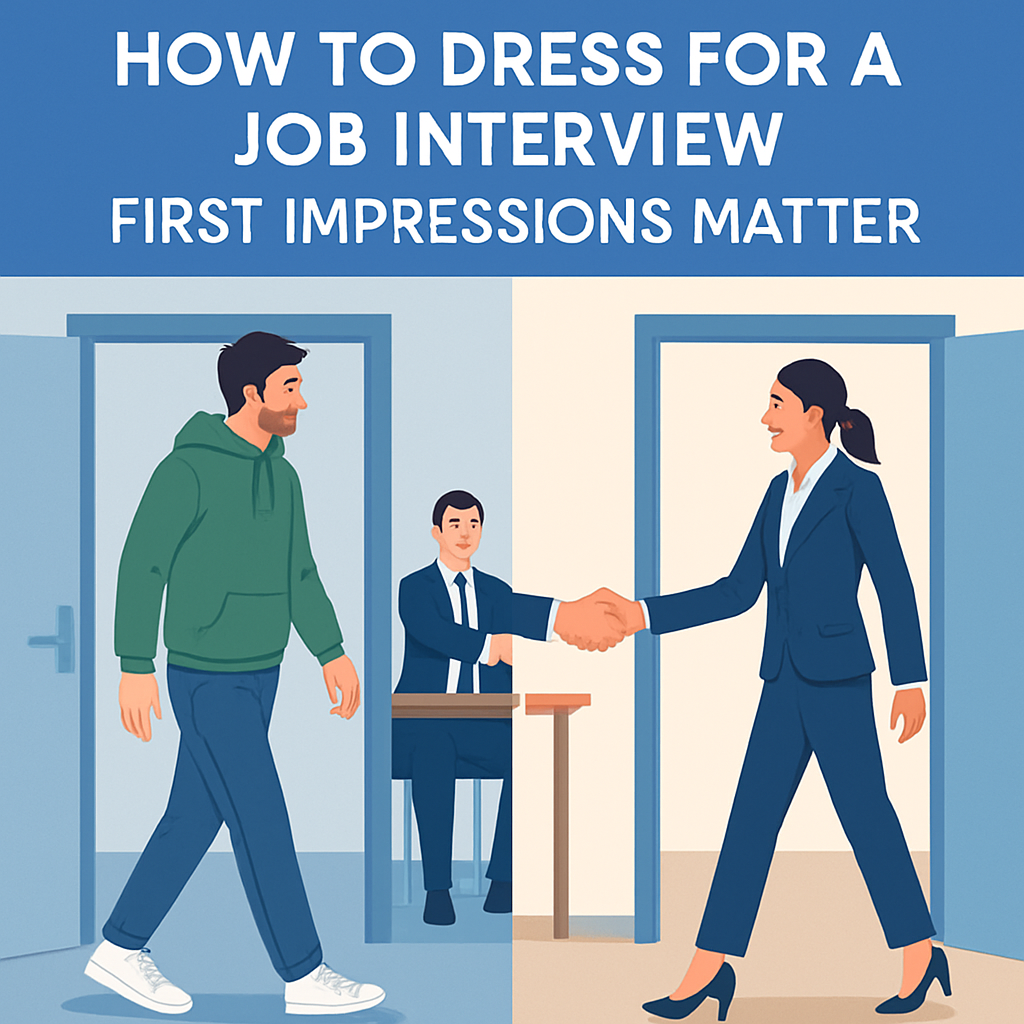When preparing for a job interview, most candidates focus on polishing their resume and practicing answers to common questions. But one often-overlooked factor can influence the outcome just as much—how you dress. Dressing well is about more than looking polished; it communicates confidence, professionalism, and cultural awareness.
In today’s competitive job market, a strong first impression can make the difference between receiving an offer and being passed over.
The Psychology of First Impressions
Research shows that people form opinions within the first seven seconds of meeting someone. For employers, these initial moments shape how they perceive your competence and fit for the role. While your skills and experience will ultimately carry the most weight, your appearance sets the tone for the conversation that follows.
- Professional attire conveys respect for the opportunity.
- Polished grooming and fit demonstrate attention to detail.
- Confident presentation reassures employers you can represent their company well.
Why Dressing Well Matters in Interviews
- Shows Respect and Seriousness
Your clothing sends a nonverbal message: This interview matters to me. Dressing thoughtfully tells employers that you take the opportunity seriously and value their time.
- Boosts Your Confidence
Looking professional helps you feel professional. The right outfit can improve your posture, reduce nerves, and give you the confidence to make a strong impression.
- Aligns with Company Culture
Every company has a culture, and attire is part of it. Matching (or slightly elevating) the dress code demonstrates that you’ve done your homework and are ready to fit in.
- Reinforces a Lasting Impression
Long after the interview ends, how you presented yourself will stick in the employer’s mind. A polished appearance reinforces the image of a capable, detail-oriented candidate.
What to Wear Based on the Role
Different industries and positions come with different expectations. Here’s how to tailor your attire:
Corporate & Finance (Banking, Consulting, Law)
- Men: Dark suit, light dress shirt, conservative tie, polished leather shoes.
- Women: Tailored skirt or pantsuit, blouse in neutral tones, closed-toe shoes.
- Why: Formal attire reflects the structured and traditional nature of these industries.
Creative Fields (Design, Marketing, Media)
- Men: Blazer with chinos or dark jeans, collared shirt (tie optional), stylish loafers.
- Women: Professional dress or blouse with tailored pants/skirt, blazer optional, tasteful accessories.
- Why: Creativity is valued, but professionalism should still come through.
Tech & Startups
- Men: Smart casual—chinos or slacks with a button-down or polo, clean sneakers or loafers.
- Women: Blouse with tailored pants or a simple dress, flats or clean low heels.
- Why: Startups value innovation and flexibility; overdressing can feel out of place.
Healthcare (Medical, Nursing, Administrative)
- Men: Slacks with dress shirt and tie, or a full suit for senior roles.
- Women: Conservative dress or blouse with slacks/skirt, minimal jewelry, closed-toe shoes.
- Why: Cleanliness and professionalism are key. Attire should inspire trust.
Architecture & Engineering
- Men: Business casual with polish—dress shirt, blazer, slacks, leather shoes. A full suit may work for client-facing roles.
- Women: Blouse with tailored pants/skirt, blazer, professional flats or heels. A sleek, modern look reflects the field.
- Why: Employers value creativity and precision—attire should balance professionalism with a sense of style.
Construction & Skilled Trades
- Men & Women: Business casual—clean, pressed slacks or khakis, collared shirt or blouse, polished shoes (not work boots unless requested).
- Why: Employers don’t expect suits but do want to see professionalism and neatness. For roles requiring site visits, sturdy but clean footwear may be appropriate.
Education (Teachers, Administrators, Professors)
- Men: Dress shirt with slacks, tie optional; suit for higher-level roles.
- Women: Blouse with slacks/skirt or a modest professional dress.
- Why: Professional yet approachable attire sets the right tone for student- and parent-facing roles.
Hospitality & Customer Service
- Men: Dress shirt with slacks, polished shoes, blazer optional.
- Women: Blouse with skirt/slacks or professional dress, neat flats or heels.
- Why: Employers want candidates who present well to customers—professional and approachable attire is essential.
Beyond Clothing: Other Keys to First Impressions
- Body Language: A firm handshake, steady eye contact, and good posture matter as much as attire.
- Preparation: Bringing extra resumes and knowing the company shows respect and initiative.
- Mindset: Professional dress works best when paired with positivity and confidence.
Key Takeaways
- First impressions form in seconds, and attire strongly influences how you’re perceived.
- Choose clothing that matches industry standards, leaning slightly more formal.
- Dressing well shows respect, builds confidence, and leaves a lasting positive impression.
FAQ
Q: Is it possible to overdress for an interview?
Yes. A full suit might feel too formal in a startup or construction environment. Aim to be one step above the company’s day-to-day dress code.
Q: What are safe colors to wear?
Neutral shades like navy, gray, black, and beige are professional and versatile. Small accents of color can show personality without being distracting.
Q: Should I dress differently for a virtual interview?
Yes and no. While only your upper body may be visible, dress as if you were meeting in person—it sets the right mindset.
Dressing well for an interview goes far beyond fashion—it’s about presenting the best version of yourself from the moment you walk through the door. While your experience, skills, and personality will ultimately determine whether you land the job, your attire sets the stage for how those qualities are received. By aligning your outfit with industry expectations, you demonstrate respect and professionalism.
Remember: first impressions are powerful, and you only get one chance to make them. Choosing the right interview attire helps you step into the room with confidence, project credibility, and leave a lasting mark on potential employers.

